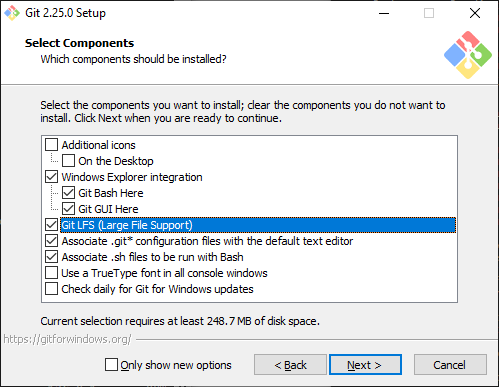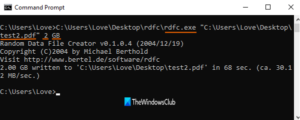
- Create large zip command line windows zip file#
- Create large zip command line windows update#
- Create large zip command line windows archive#
- Create large zip command line windows windows 10#
- Create large zip command line windows mac#
URI uri = URI.
Create large zip command line windows zip file#
Create the zip file if it doesn't exist be used to force zip to create PKZIP 2 compatible archives (as long as Zip64. Public static void zipSingleFileNio(Path source, String zipFileName) Some old command lines that depend on command line inconsistencies may no. If Zip64 support for large files and archives is enabled and zip is used as a. ZipExample.zipSingleFileNio(source, zipFileName) Some old command lines that depend on command line inconsistencies may no. ZipEntry zipEntry = new ZipEntry(source.getFileName().toString())

ZipOutputStream zos = new ZipOutputStream(įileInputStream fis = new FileInputStream(source.toFile()) Public static void zipSingleFile(Path source, String zipFileName) set Args WScript.Arguments source Args(0) ' remove trailing slashes as we add slashes when needed later while Right(source, 1) '\' source Mid(source, 1, Len(source) - 1) wend target Args(1) ' create empty ZIP file set fso CreateObject('Scripting.FileSystemObject') set zip fso.OpenTextFile(target, 2, vbtrue) ' write ZIP header, this ensures that Windows recognizes the file as 'ZIP Folder' zip.Write 'PK' & Chr(5) & Chr(6) & String(18, Chr(0)) zip.Close set zip nothing set fso. It provides superior compression and (in my view) is a great program.
Create large zip command line windows update#
In 2021, the 7z.exe program is used to compress, extract and update files through the command line.
Create large zip command line windows archive#
Compress, extract, archive and optimize with the 7z.exe executable. 7 Zip Command Line Examples Use 7-Zip on the command line. ZipExample.zipSingleFile(source, zipFileName) 7 Zip Command Line Examples - Dot Net Perls. If you have trouble with or questions about this please submit a ticket to Technical Support.Path source = Paths.get("/home/mkyong/test/Test.java") This is optional and would depend on your preferences. You may want to add a command at the end of your batch file to delete the dirlist.txt file. For example, you can add "-r -p" just after wzzip if the folders have subfolders inside and you want their contents added as well. Other switches can be added to the wzzip command, if desired. The item should be replaced with the path to the target folder in which you want to save your Zip files. The item should be replaced with the actual path to the parent folder, which contains the subfolders you want to zip. The second section reads the text file, changes directories to the one on the line it just read, and performs the wzzip command once for each of these lines in the text file. Running the commands above as a batch file, will create a text file with the name of each directory (folder) on separate lines. The Compress-Archive cmdlet creates a compressed, or zipped, archive file from one or more specified files or directories. Note: The final line above the ending parenthesis is the CD command followed immediately by 2 dots. They will need to be saved in, and run from, a batch file.įor /f "tokens=*" %%a in (dirlist.txt) do (

to Zip/Unzip from the command line using Windows built-in capabilities only.

This set of commands contains a few steps and will not work directly from a command prompt. In the past it was not possible to create Zip files and Unzip archives in. It is also possible to create a set of Zip files where the contents of all of the subfolders in a folder will be zipped into individual Zip files. To work with other file types you would need to change *.txt to the appropriate file extension.
Create large zip command line windows windows 10#
LoginAsk is here to help you access Windows 10 Unzip With Password.
Create large zip command line windows mac#
For the example using the Command Prompt window it would now look like this:įor %f in ("*.txt") do wzzip "%~nf.zip" "%f" The examples above are specifically for text files (. On a Mac or Linux system, you can create an encrypted zip file using the command line.

If your filenames include spaces you will need to enclose the 2nd, 3rd, and 4th variable in quotes. Or enter the following two lines in a batch file:įor %%f in (*.txt) do wzzip %%~nf.zip %%f If you have already added this to the PATH environment variable, you will only need to use the second line.Īfter changing directories, you can enter the following two lines in the Command Prompt window: The first one defines the PATH to the WinZip folder. To have WinZip Command Line Support Add-On create individual Zip files of each file in a folder, open a Command Prompt window and change directories ( CD) to the folder where the files to be zipped are located. Individual Zip files in a folder of files If you are not experienced with using a command line interface you may first want to go over some of the information in Command Line Basics.


 0 kommentar(er)
0 kommentar(er)
